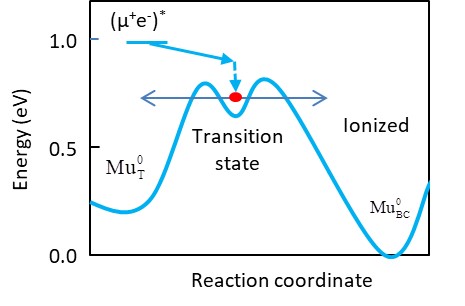Speaker
Description
The model describes the reaction of atom-like muonium with the host lattice at the end of the implantation trajectory. Reactions of the bare muon with the host or prompt formation of the final states are not covered by this model. Since these alternative processes are temperature independent, their maximum contribution can be estimated from the smallest value that occurs at any given temperature. They can be considered as a temperature-independent "background".
At the end of the trajectory, the muonium has just enough kinetic energy to jump across the potential barrier from one interstitial site to the next. At the top of the barrier, muonium is so slow that a strong inelastic interaction, e.g., the excitation of a local stretching mode, can occur and a weakly bound muon-electron configuration, the transition state, is formed (see Fig. 1).


